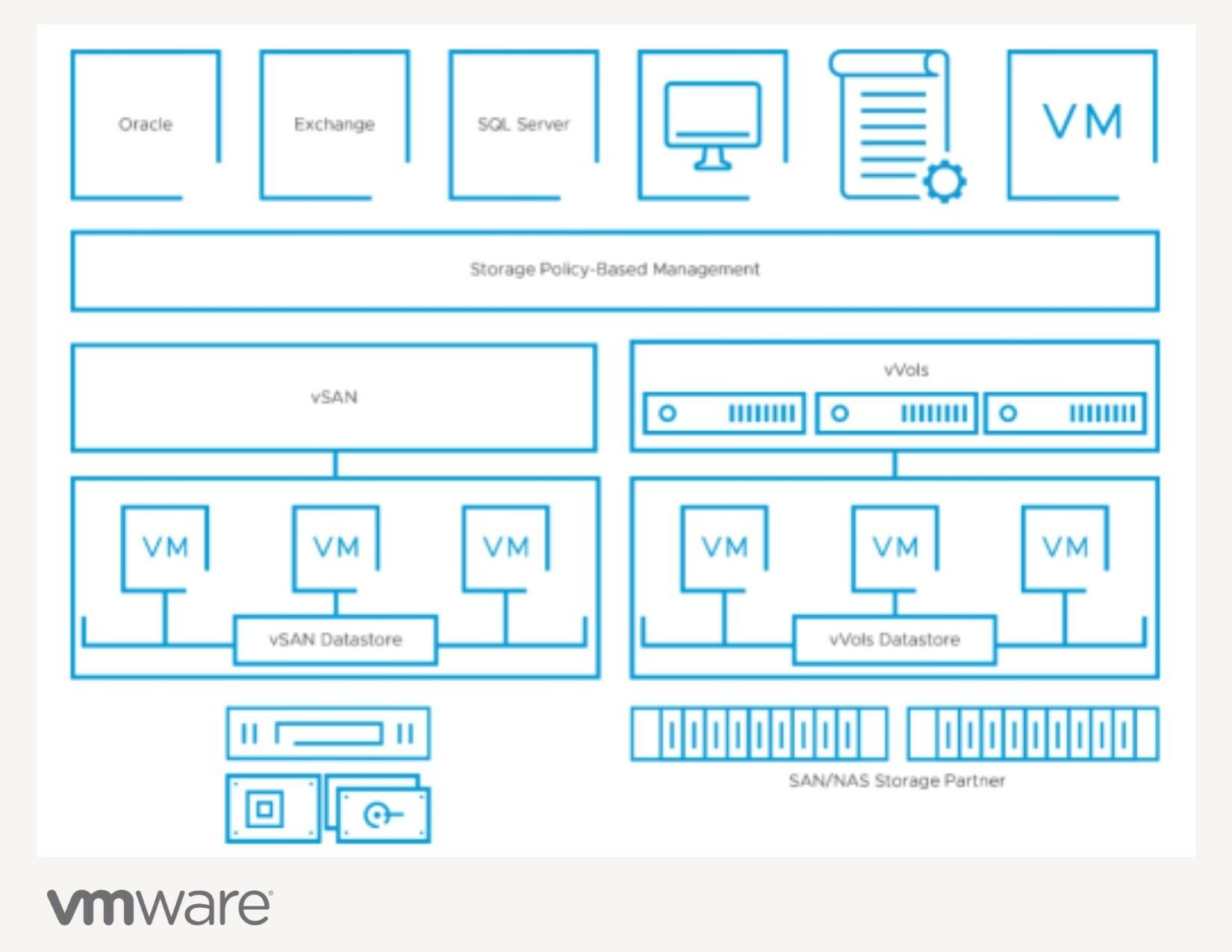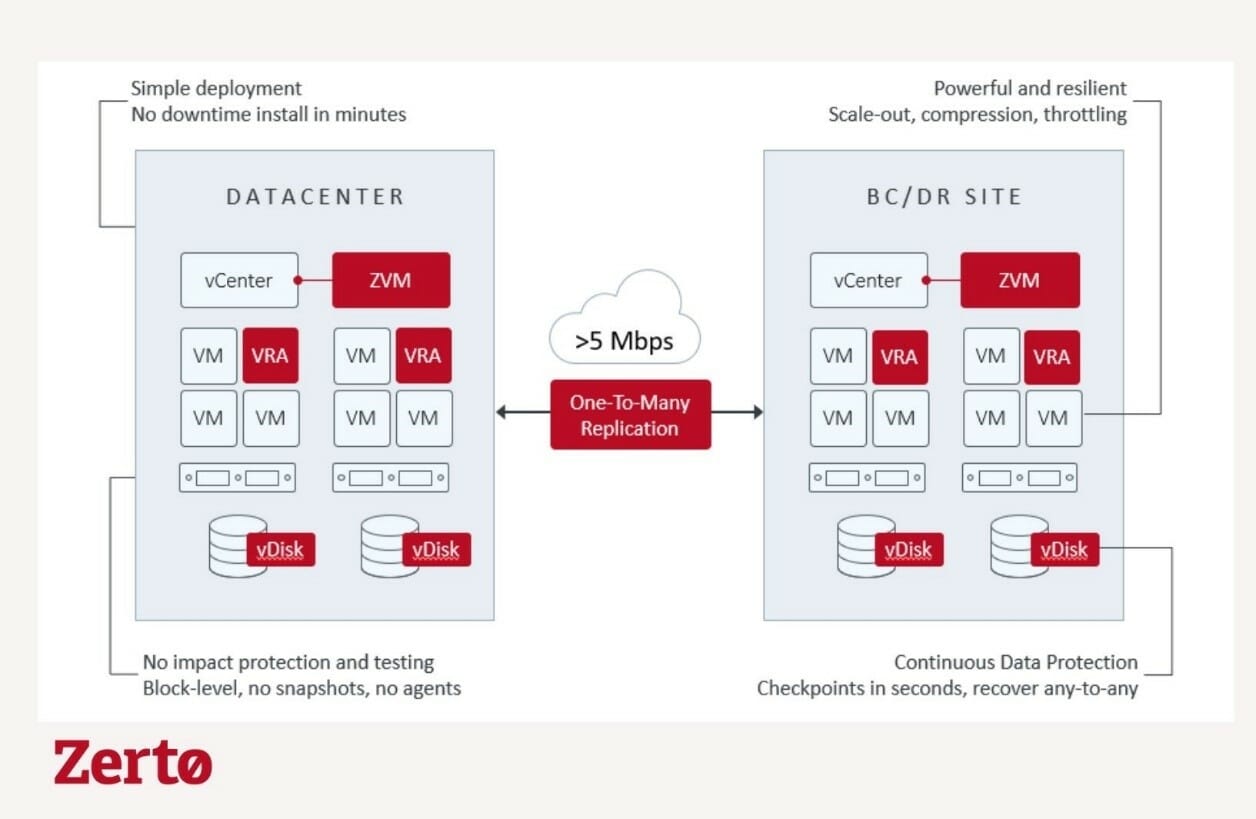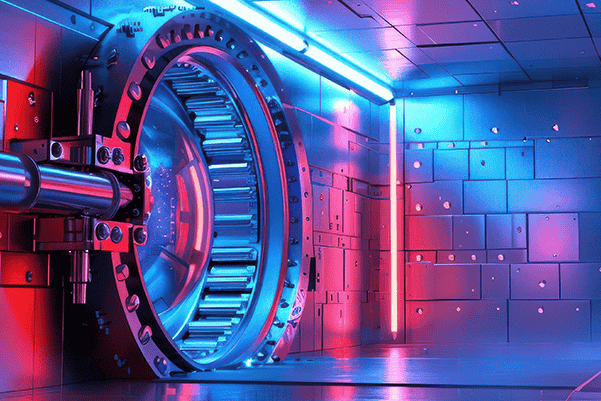
Zerto 8.0: Realizing Storage Modernization and Cost Savings with VMware Virtual Volumes
Last week, Zerto globally released version 8.0 of the IT Resilience Platform. The release of Zerto 8.0 expands disaster recovery and data protection across on-premises and cloud environments.
With Zerto 8.0 comes support for VMware vSphere Virtual Volumes (vVols). In this blog, we’ll unpack the world of software-defined storage (SDS), VMware’s innovation in the space, and how Zerto’s software-defined approach unlocks the full value of VMware’s software-defined data center.
Understanding the demand for Software Defined Storage (SDS)
VMware describes software-defined storage as storage data center architecture that separates the management and provisioning of storage from the underlying physical hardware, similar to server and network virtualization. SDS replaces static and inefficient hardware with dynamic, agile, and automated solutions. VMware’s simple,yet intelligent SDS technologies deliver a more scalable, flexible, and automated storage solution for today’s business and application demands.
In a nutshell, a software-defined solution eliminates an organization’s need and dependency on using specific hardware vendors for storage.
In today’s environment, defined by ever-expanding data growth and sprawl, managing and scaling hardware becomes both a technological and a financial challenge. For decades, we’ve been solving problems via a software-based approach, hence organizations are looking to modernize any part of their data center through software. Storage hardware is not immune.
Software-Defined Data Center (SDDC) Innovation: VMware vSphere Virtual Volumes (vVols)
Since 2012, VMware has made headlines in the Software-Defined Storage world since, and for a good reason. By continuing to drive its vision of IT transformation through the hypervisor, they’ve introduced the same benefits of server virtualization to storage virtualization. vVols is a crucial component of their SDDC portfolio and a progressive step towards delivering a Software-Defined Data Center (SDDC). So, what makes vVols unique?
As defined by VMware, vVols is a SAN/NAS management and integration framework that exposes virtual disks as native storage objects and enables array-based operations at the virtual disk level. vVols make SAN/NAS devices VM-aware and unlocks the ability to leverage array-based data services with a VM-centric approach at the granularity of a single virtual disks. Watch this great explainer video on vVols.

Image Source: VMware vSphere Virtual Volumes (vVols) Solutions Brief
VMware-specific benefits on software-defined storage
vVols delivers several business and technical benefits, far too many to cover in just one blog, but at a very high level, they include:
- Simplified storage operations
- Simplified delivery of storage levels
- Improved resource utilization
For a more detailed explanation of its benefits, read this VMware vVols blog.
Software-defined innovation: The Zerto IT Resilience Platform™
Protecting and recovering workloads within software-defined storage is just as crucial as it is within hardware. And just like VMware did with virtualization, Zerto revolutionized the approach to disaster recovery and redefined IT Resilience. How? By bringing replication down to the hypervisor level.
Similar to physical storage, IT professionals realized that a software-defined approach to disaster recovery and data protection solutions provides the same benefits. For starters, it improves the total cost of ownership as well as removes vendor lock-in and the scale limitations of physical appliances.
The IT Resilience Platform is delivered via a software-only approach, giving you more storage and infrastructure options for your data center.
Continuous Data Protection
Replication at the hypervisor-level
Zerto’s innovative and industry-leading Continuous Data Protection (CDP) is the secret sauce to IT Resilience and 24/7 availability. At the heart of CDP is its replication. Zerto employs near-synchronous replication at the hypervisor level. Utilizing change block tracking (CBT), it’s observing and copying each write in real-time to your VMs in checkpoints within five seconds of each other. This approach brings benefits such as:
- Recovery point objectives (RPOs) of seconds
- No need for snapshots and backup copies
- No agents, appliances or scheduling
- Simple deployment and install

Industry-best recovery time objectives (RTOs): Simple and consistent application recovery
Think of your multi-VM enterprise applications today. With the traditional incremental “snapshot” approach, it’s difficult and time-consuming to recover those multi-VM applications to a specific point in time, and it’s even more challenging to do it quickly.
Zerto treats multi-VM applications as a cohesive unit. You create a virtual protection group (VPG) where you designate the corresponding VMs and configure your desired SLA and settings. Since Zerto doesn’t utilize snapshots, you can rewind and recover using the journal to the checkpoint of your choice and recover your entire application. This brings:
- Industry best RTOs
- Consistent application recovery
- Easy and intuitive recovery and migration of multi-VM applications
Any-to-Any Replication and a Multi-Vendor Approach
What if you’re not able to implement vVols in your recovery site? Zerto’s any-to-any replication approach allows you to implement vVols at your production site and unlock its core value without yet having to invest in revamping your recovery site.
This same approach allows you to leverage your existing storage infrastructure, even if you have a multi-vendor data center. Additionally, you can gradually introduce vVols on selected workloads while still using Zerto to protect the VMs for those workloads.
Cost savings of Software-Defined Storage (SDS) and Zerto
When it comes to software-defined storage, Gartner research1 shows that, compared with legacy external controller-based (ECB) storage offerings, SDS solutions can reduce TCO by 50% or more without sacrificing performance, data services software robustness or availability service-level objectives.
Zerto brings direct cost and resource savings to your organization. Not long ago, we asked the Forrester Group to conduct a Total Economic Impact Report on Zerto, and here are some critical economic highlights of companies interviewed using Zerto:
- $2 million in an average reduced cost of planned downtime
- $775,952 is the total of avoided costs by displacing other software tools
- $481,952 in the reduction in costs of disaster recovery operations
Conclusion
Combining VMware’s leadership in the (SDDC) space with Zerto’s software approach to IT resilience will continue to deliver new and exciting capabilities for operational efficiency and cost savings to organizations.
Zerto is an advanced tier member of VMware’s Technology Alliance Partner (TAP) program and part of VMware’s Solution Exchange. As a design partner, Zerto continues to drive innovation and further integration with VMware vSphere.
Stay tuned for more blogs on our new capabilities and integrations with VMware.
Looking for a deeper dive into Continuous Data Protection? Read Zerto’s Hypervisor-based Replication White Paper.
-
Source: Gartner Research – High-Tech Tuesday Webinar: Making the case for Software Defined Storage
 Andy Fernandez
Andy Fernandez 

